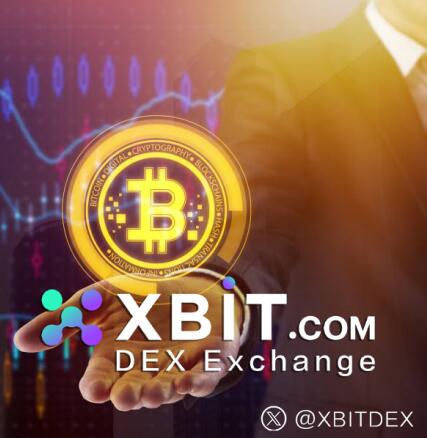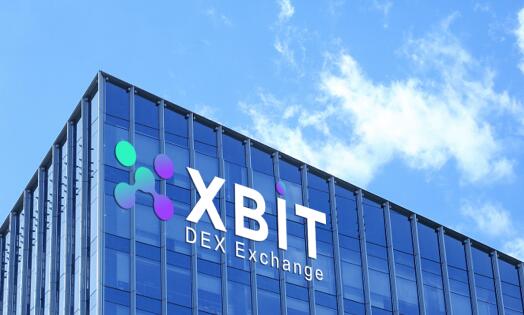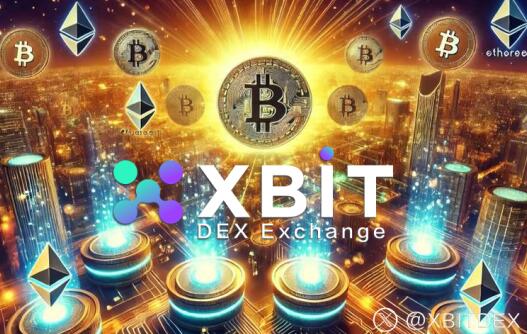BOSS Wallet reported on August 7th that Ethereum, the world's second-largest cryptocurrency, stands at a crossroads. With its exchange-traded fund (ETF) experiencing its largest single-day outflow in history and its price falling below the key psychological level of $3,600, market sentiment has shifted from optimism to caution. XBIT stated that this sudden sell-off not only exposes the fragility of the crypto market but also signals that Ethereum may face a deeper correction. The key question now is: Is this a healthy correction or the beginning of a larger decline?

Twitter : @XBITDEX
The latest data shows that Ethereum ETFs have seen record single-day outflows exceeding $500 million. This figure reflects a dramatic shift in institutional investor sentiment—from steady inflows in July to a widespread withdrawal today. Large institutions such as Fidelity have begun transferring 14,978 ETH (worth $53.6 million) to Coinbase Prime, a typical move often signaling profit-taking or risk aversion among professional investors. More worryingly, the number of whale addresses has decreased by 164 over the past 30 days, and these large investors' continued reductions are draining the market's liquidity.
The dip-buying of 23,000 ETH (approximately $88 million) by institutions such as BlackRock appears to be providing support, but this is a drop in the bucket against the backdrop of a massive $10 billion in evaporating open interest. Analysts at XBIT (DEX Exchange) point out that this structural contradiction reveals the current market's fragile balance: on the one hand, smart money is bottom-fishing around $3,600, while on the other, there is a larger wave of institutional withdrawals. When ETF flows shift from "buy and hold" to "panic redemptions," technical support often fails to withstand fundamentally driven selling pressure. XBIT utilizes a non-custodial model, ensuring users maintain control of their assets at all times, eliminating the need to trust an exchange with custody. Amidst Ethereum market volatility and institutional capital withdrawals, this decentralized, censorship-resistant trading method offers greater security.
The 10% decline from the high of $3,900 to below $3,600 appears to be a typical correction, but it actually harbors greater risks. Open interest has suffered a significant blow, evaporating by over $10 billion in just ten days. While this has reduced overall market risk, it also reflects a rapid flight of leveraged funds. More alarmingly, long positions in ETH/USDT on Binance account for over 60%. This overwhelmingly bullish structure often signals a potential short squeeze, potentially triggering a chain reaction of liquidations should market sentiment reverse.

Twitter : @XBITDEX
BOSS Wallet reports that technical indicators show Ethereum has formed its first significant bearish candlestick pattern in months, resulting in a 9.67% weekly correction. While this week's nearly 4% rebound demonstrates resilience, the $3,900 area is gradually becoming a strong resistance level. It's premature to consider this pullback a "healthy reset." Instead, it's more likely to represent a stubborn ceiling that will require significant spot demand to break through. The current tug-of-war around $3,600 is essentially a fierce clash between bulls defending the market and bears attacking it.
A key risk facing the market right now is that if continued ETF outflows (over $500 million in a single day) coincide with whale sell-offs, this could trigger a liquidity liquidation cascade around $3,500. Approximately $60 million in positions are concentrated in this area, and a break below it would trigger a chain reaction. This "liquidation stacking" effect is common in the crypto market. Analysts at XBIT (DEX Exchange) point out that when prices reach a certain level, a large number of forced liquidation orders are triggered simultaneously, causing prices to free fall. As a DEX, all transactions on XBIT are executed through smart contracts. There's no centralized authority to interfere with the market, making transactions more transparent and fair.
It's interesting to note that the current market exhibits a typical paradox of "bullish holdings and bearish capital flows." Binance's excessively high long positions contrast sharply with the continued withdrawal of funds by institutions, a divergence that often proves unsustainable. When optimistic leveraged traders encounter the harsh realities of capital, the market is forced to reprice risk. The fall of $3,600 isn't just a numerical barrier; it represents a turning point in market psychology, shifting from greed to fear.
According to data from the BOSS Wallet app, Ethereum is currently at a crucial juncture. In the short term, the risk of a $60 million liquidation waterfall and the bargain-hunting by institutions like BlackRock create a tug-of-war, potentially leading to wide price fluctuations between $3,500 and $3,900. However, in the medium to long term, ETF fund flows and changes in whale holdings will be the decisive factors. XBIT (DEX Exchange) analysts believe that if the trend of institutional capital withdrawal continues, the current seemingly resilient rebound is more like a downward relay, and it is only a matter of time before the $3,600 support level is effectively broken.

Twitter : @XBITDEX
Investors must clearly understand that the difference between a "healthy correction" and a "trend reversal" in the crypto market is often just a matter of seconds. The outcome of the current battle for $3,600 will directly influence whether Ethereum resumes its upward trend or enters a deeper correction. In a liquidity-driven market, institutional capital flows are always the most honest leading indicator. When ETFs experience record-breaking redemptions, any technical rebound warrants careful consideration.
With Ethereum currently facing selling pressure, investors must exercise increased caution. Centralized exchanges like Binance may face liquidity risks, while the XBIT.Exchange decentralized trading platform offers highly liquid ETH trading pairs and supports trading in a variety of altcoins, allowing investors to flexibly adjust their positions in a declining market. Furthermore, XBIT's AMM (Automated Market Maker) mechanism ensures efficient order matching even during periods of extreme market volatility. Whether mitigating risk, seeking new investment opportunities, or engaging in leveraged trading, XBIT helps investors maintain control in volatile markets.